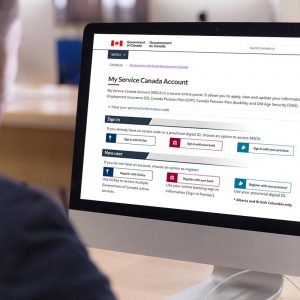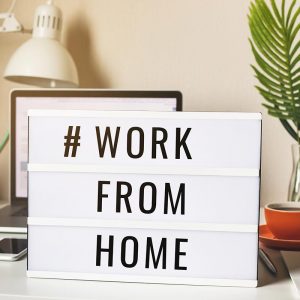Last Updated on September 23, 2023

Many Canadians still view real estate as a significant investment, despite the upward trend in home prices. In particular, many millennials still aspire to become homeowners. While the 2020 economic downturn has halted many home-buying plans, the historically low interest rates have provided an excellent opportunity for others to purchase their first property.
However, if you’ve never bought a home before, you may not know where to begin. The process of purchasing a home, whether it’s a standalone house, townhome, or condo, does not begin with a call to a real estate agent to arrange a viewing. Instead, it starts years ahead of time when you make the decision to become a homeowner.
Our step-by-step guide on how to purchase a home in Canada covers everything from determining if you’re prepared to be a homeowner to obtaining your house keys.
Are You Ready to Buy a House in Canada?
Before buying a home you need to ask yourself the hard question: Are you ready to buy a house?
Homeownership is a big responsibility, and it’s crucial to ensure that you have your financial affairs in order before taking charge of an asset that could be worth half a million dollars or more. Prior to embarking on the journey of homeownership, consider the following questions:
Do You Have a Down Payment?
If you have saved up for a down payment, you have made progress towards fulfilling your desire to purchase a house. If you haven’t begun saving yet, don’t worry. You don’t have to have a down payment before you begin your home buying process, but you must possess the financial capacity to save for a down payment (we’ll provide guidance on how to save for it later). This implies that you must allocate a portion of your budget each month to deposit into a savings account.
Don’t know what we’re talking about? Learn about down payments here.
Is Your Income Steady?
Being a homeowner entails taking responsibility for all bills and unforeseen expenses associated with repair and upkeep. Unlike renting, you cannot contact your landlord when the roof begins to leak, which highlights the importance of having a stable income that can cover both your monthly and unexpected expenditures.
A steady income can also improve your eligibility for a mortgage and raise your credit score, which can further enhance your qualification for a mortgage. For those who are self-employed, purchasing a house may present more complexities, so it’s advisable to consult with a mortgage broker early on in the process.
What Are Your Local Market Conditions?
Although it’s difficult to time the market, evaluating the current state of the local real estate market before making a purchase is a wise decision. Is the mortgage interest rate low? Is the local market in favor of buyers or sellers? Will you be competing with other buyers or have a wide selection of properties to choose from?
If you are reading this during the COVID-19 pandemic, it’s critical to consider how this may impact your mortgage in the future. Despite low interest rates today, you must ensure that you can make your regular payments at a higher rate in the future.
Are You Ready to Settle Down?
Lastly, is your current life situation conducive to settling down? From a financial perspective, it’s ideal to buy a house if you plan on staying in the same location for at least three to five years. Assess your professional and personal life to ensure that you don’t anticipate any significant changes that may necessitate relocation.
With all that out of the way. Here’s how to buy a house in Canada.
How to Buy a House in Canada?
The steps on how to buy a house are the same whether you’re buying a house, a townhouse, or condo. For simplicity, our examples will focus on how to buy a fully detached home.
Step 1: Save for a Down Payment
Saving for a down payment is the initial stage in buying a house. In Canada, you must provide a down payment of at least 5% of the home’s purchase price. For homes priced between $500,000 and $1 million, you’ll need to put down 5% of the first $500,000 and 10% of the remaining amount. A minimum down payment of 20% is required for homes worth $1 million or more.
If you haven’t saved for a down payment yet, you can start by setting aside money each month, but it may take several years to accumulate enough funds. Alternatively, you can consider utilizing the Home Buyer’s Plan, which allows you to withdraw up to $35,000 from your RRSP without incurring taxes. Another option is to explore other sources of funding, such as a monetary gift from a family member.
Accumulating a substantial down payment is typically advisable because it offers several advantages, including:
- Paying smaller mortgage default insurance premiums
- Building more equity in your home
- Having a lower monthly mortgage payment
- Paying less interest over the life of the mortgage
It’s important to note that aside from the down payment, you’ll also need to save 3% to 5% of the home’s purchase price to cover the closing costs. For instance, based on the $500,000 home cited earlier, you’ll need to save another $15,000 to $25,000 to cover the closing costs when purchasing a house, on top of your down payment. The following is a list of common closing costs you should expect to pay:
- Land transfer tax: $12,950
- Lawyer fees: $1,000
- Title insurance: $500
- Home inspection: $500
Step 2: Get Organized
While saving for your home down payment, it’s a good idea to organize your finances and paperwork. This can be especially helpful as you may spend several months saving for your down payment. During this time, you can focus on the following tasks:
Pay down your debt
If you have any credit card debt, student loan debt, car loans, or a line of credit with a balance, it’s a good idea to pay them off. Lowering your debt levels will have a positive impact on your credit score and debt service ratios, which are calculations that lenders use to determine how much you can comfortably borrow for your mortgage.
Prepare your documentation
When applying for a mortgage, you’ll need to provide a lot of paperwork. Preparing your documentation ahead of time will make the process smoother and faster. This can be particularly helpful if you find your dream home and need to move quickly through the mortgage approval process. Here’s a checklist of the documentation you’ll need when buying a house:
- Proof of current employment, such as a T4, pay stub, or a letter from your employer
- Documentation of any other sources of income you have, such as investments or business income
- Savings and investment statements for the past 90 days
- If you plan to use the Home Buyer’s Plan, proof of withdrawal from your RRSP
- If you’re receiving a financial gift from a family member, you’ll need a letter confirming that the gift is not a loan
- A void cheque
- An inventory of all other debts and assets like cars and car loans
Step 3: Check for Rebates and Grants
To ensure that you don’t make the home buying process more expensive than necessary, check if you qualify for any rebates or grants. Several programs are available for first-time homebuyers, including:
- Home Buyer’s Plan: Withdraw up to $35,000 from your RRSP for a home down payment, tax-free
- Toronto’s land transfer tax rebate: If you are buying a house in Ontario you may receive a partial refund of Toronto’s land transfer tax up to $4,475
- Home Buyer’s Amount: a non-refundable $5,000 income tax credit
- GST/HST New Housing Rebate: a partial rebate on the GST or HST you paid on the cost of your new home
Step 4: Shop Around for a Great Rate
When you’re looking to buy a home, it’s important to shop around for the best mortgage rate. Just as you wouldn’t settle for the first car insurance quote you receive, you shouldn’t settle for the first mortgage offer you’re given. Finding the lowest mortgage rate can save you thousands or even tens of thousands of dollars in interest over the life of your mortgage. Luckily, a mortgage broker can help make the process easy.
By filling out just one application, a mortgage broker will shop around to multiple lenders on your behalf and return with the best offer and lowest rate available. Still unsure of the benefits of using a mortgage broker? Consider the difference between securing the lowest mortgage rate available today versus the standard posted rates at major banks for a $500,000 home.
Even if a mortgage broker can’t find you a better rate, they’ll still be able to offer you expert, personalized advice at no cost.
Step 5: Get a Mortgage Pre-approval
Once you have saved your down payment, prepared your documentation, and found a mortgage broker, the next step is to obtain pre-approval for a mortgage. Mortgage pre-approval does not cost anything and does not require you to commit to a specific lender. However, it does provide you with valuable information that can guide your home search, such as:
- How much you can afford to spend on a house
- How much your maximum monthly mortgage payment could be
- What mortgage interest rate is available to you
Obtaining a mortgage pre-approval is a safe way to acquire these vital details, which can assist you in determining the maximum purchase price. If you are satisfied with the mortgage rate and lender, you may secure that rate for a maximum of 160 days. Locking in your mortgage rate guarantees that you will have access to the lower rate even if it rises in the future. Conversely, if the rates decrease, your lender will honour the lower rate.
Getting a pre-approval can be a little daunting if you’ve never done it before, so check out this list of dos and don’ts for pre-approvals before you jump.
Step 6: Find a Home
Finally, the fun part – house hunting! With your mortgage pre-approval in hand, your maximum purchase price in mind, and a substantial down payment, you’re ready to contact a real estate agent and begin your house hunt. Here are our top tips:
- Find a real estate agent that specializes in the type of house or neighbourhood you prefer (family referrals are a great place to start)
- Avoid representing yourself if you are a first-time homebuyer. It’s better to rely on the expertise of an experienced agent
- Make a list of “must-have” and “nice-to-have” features for your future house. It’s important to know where you can be flexible
- Research the market in your ideal neighbourhood to make sure home prices and your maximum purchase price are in sync
- Be prepared to move quickly in a competitive market
You can use a site like Zoocasa to do a lot of this research without having to leave the house.
Step 7: Make an Offer and Seal the Deal
Once you have found the house you want, the process will move quickly, but don’t worry. Firstly, you’ll need to submit an offer to purchase. If the housing market is competitive, you may not be the only buyer submitting an offer. If your offer is accepted, you’ll then pay a deposit to the seller, which will be applied to the purchase price of the home. You’ll also need to finalize your mortgage financing through your mortgage broker and arrange for a home inspection.
The offer may be amended based on the findings of the home inspection. Eventually, you’ll secure your financing and, with the help of a real estate lawyer, pay your down payment and transfer the title of the home into your name. The entire process typically takes 30-60 days, depending on the terms of the offer to purchase.
Finally, you’ll receive the keys from your real estate agent, and you’ll officially become the owner of your new home.
Conclusion
This article provides a comprehensive overview of the home buying process in Canada, but there is much more to learn. Luckily, there are many real estate professionals, such as mortgage brokers and real estate agents, who can offer expert guidance and answer any questions you may have about purchasing a home in Canada. By starting early, saving a significant down payment, and ensuring your finances are in order, you can set yourself up for success when you’re ready to take the leap into home ownership.








